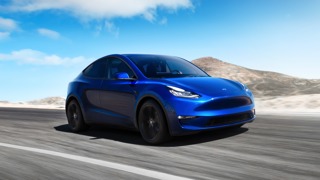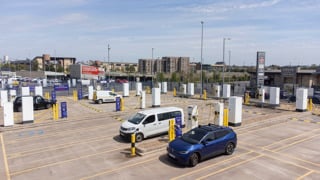By Paul Hollick, chair of the Association of Fleet Professionals (AFP)
It’s no exaggeration to say that used values of electric vehicles (EVs) have collapsed in recent months, with 12 months reductions of 20-25% not uncommon. This is, I’m sure you’ll agree, bad news for fleets looking to electrify.
Until perhaps a year ago, it was possible to make a convincing financial case for EVs at board level. Yes, they were expensive to buy new but residual values were remarkably strong and charging was cheap. Now the second and third parts of that argument have fallen away.
Of course, fleets are still going to want to continue the process of electrification thanks to benefit in kind advantages for drivers, the 2030 deadline edging closer and for environmental reasons. However, as AFP members continually testify, being able to back all of this up with a sound financial argument has always made the process much easier.
The questions now are what can be done to help strengthen RVs and reduce the cost of power?
The latter is potentially the easiest. Fleets that concentrate on home charging are still benefitting from lower costs and over the next year or so, we can expect to see electricity prices fall to a level that, if not comparable to before the war in Ukraine, will be at least much more competitive than today.
However, addressing the used EV market is going to be more of a challenge. How do we change the perceptions of used car and van buyers, convincing more of them that these vehicles are desirable?
It seems to us that doing so centres around making EVs more affordable while ensuring that consumers view them as practical propositions on a day-to-day basis.
The affordability question is a tricky one. In some other countries, of course, there are Government subsidies aimed at the used EV market, ranging from low cost loans to lump sums, and these have proven effective. It would be good to see similar moves here.
However, it is the practicality issue that we feel probably needs more attention. The UK simply doesn’t have enough chargers of the right types in the right places, and despite infrastructure growth, it’s not clear that this will change at any point soon.
It’s not just pictures of queues for chargers in the news that make this situation apparent to used car buyers but many people have come back from Easter breaks in France and Germany, and noted how much more advanced and simply useable their networks appear to be.
In the past, the AFP has called for some kind of statutory charging body to be created or the appointment of a charging czar. Certainly, it’s a situation where it appears to us that a much stronger sense of direction is needed than is currently being seen.
Without visibly viable public charging in place, used EV buyers are being asked to take a chance on simply being able to charge their vehicles out on the road, which is simply an unreasonable ask.
It's arguable that all of these issues are likely to resolve. Over time, it is probable that power will become cheaper, the charging infrastructure will improve, mass production will help to bring down the price of new EVs, and used prices will therefore fall to a level that is closer to traditional ICE options.
However, it does feel as though there is limited recognition at a government level that taking greater control over the process of electrification in the short term could make EV adoption much easier for fleets and used car buyers.























GordonEvans - 28/04/2023 11:59
But surely the initial cost of ownership offset against the write-down allowance is still compelling? Also, there is at least one company now offering salary sacrifice on used EVs, so there is a bright future for used EVs and this alone should help residuals if only the other salsac providers would follow suit?